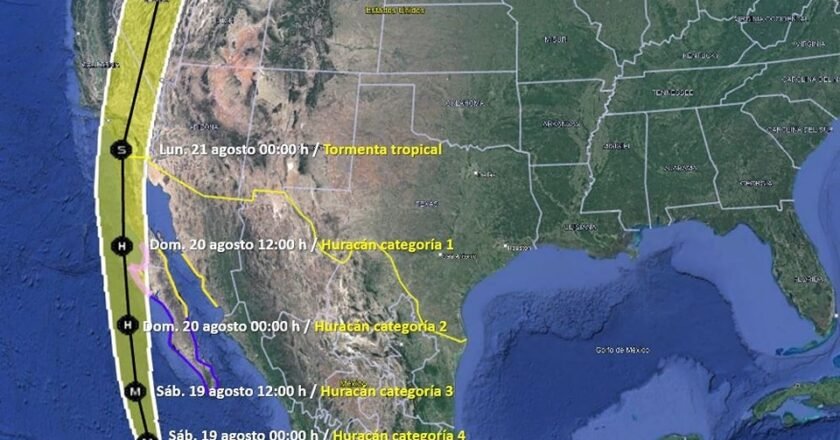BY OLIVER QUINTERO
Goodbye to Card Fees! In a unanimous decision, the Mexican Chamber of Deputies has given the green light to a reform that aims to ban the extra charges consumers face when paying with bank cards. Garnering a whopping 446 votes in favor, this move is celebrated across all political spectrums. The reform updates the Federal Consumer Protection Law, making it illegal for providers to impose additional fees for payments made with debit or credit cards. Offenders could face fines ranging from a few hundred to over two million pesos. Now, it’s off to the Senate for further discussion. If passed, this could mean more money in your pocket after each swipe or tap.
Ensenada’s Big Cleanup: 70 Tons Lighter. In Ensenada, a staggering 70 tons of trash were cleared from local beaches in March, with 10 tons collected just over the Easter weekend. Mayor Carlos Ibarra Aguiar praised the Zofemat team’s efforts to protect the coastal environment but expressed disappointment over the lack of awareness among locals and visitors about the environmental damage caused by littering. Despite having trash bins readily available on the beaches, many choose to leave their waste behind, including plastic containers, disposable dishes, and even clothing. It’s a pressing reminder that enjoying nature comes with the responsibility of keeping it clean.
Rosarito’s Easter Week Sees Dips in Hotel Stays. This Easter, Rosarito experienced an average hotel occupancy rate of 64%, with weather playing a significant role in the decreased number of visitors compared to last year, shared César Rivera González, the head of Cotuco in Rosarito. The peak occupancy hit 82% on Friday, but by Sunday, it dramatically dropped to 34%. Despite this, the beaches still welcomed around 20,000 people, with Friday seeing the highest turnout at 15,000. This year’s figures are a notable dip from last year’s 35,000 visitors, indicating a shift in the holiday’s typical bustling activity.
As if Spring Break’s Damp Spirits Weren’t Enough… Spring break in Rosarito didn’t just fall short due to weather; locals say the real storm cloud was fear of police. Local businessowners with decades of experience say they have never seen such a slow season, dismissing rain as the deterrent. It’s not the weather keeping the party at bay, but police intimidation, they argue. With the streets eerily quiet, the usual vibrant start to the high season was missing, signaling a potentially bleak summer ahead. Desperate for a lifeline, merchants are calling on officials to address this tourism crisis before it’s too late, as fear shadows the once bustling beach town.
From Silent Streets to Booming Leases. Not all are bad news, as spring breathes new life into Rosarito, the real estate market is buzzing, especially with short-term rentals, offering a silver lining amidst tourism concerns. Mar Picazo, head of the local AMPI chapter, highlights a spike in demand for vacation and long-term rentals, bringing optimism to property owners. Despite fears of fraud, particularly in cash transactions potentially hinting at money laundering, professional real estate agents are steering clients clear of legal pitfalls by adhering to cash transaction limits. The city remains vigilant against rare “ghost” agent scams, relying on thorough checks and the expertise of real estate professionals to maintain a healthy, scam-free market.
Only 13% Trust Tap Water In Baja. In Baja California, just over a tenth of the population dares to drink water straight from the tap, and why would they do that? That’s a significant trust deficit revealed by the National Institute of Statistics and Geography (Inegi) in 2023. With a mere 13.2% of residents confident in their tap water’s potability, Baja finds itself in the lower ranks nationally, where the average hovers around 20.9%. This skepticism contrasts sharply with Tlaxcala, where nearly half the population trusts their water, highlighting a broader concern over water quality across Mexico. Despite most residents relying on public water networks, satisfaction dips as issues like purity, constant supply, and infrastructure efficiency linger, underscoring the critical need for improvements in water services and infrastructure in the region.
Vehicle Accident Deaths Spike in Ensenada. In just the first two months of 2024, Ensenada witnessed a staggering 350% increase in fatalities from vehicle accidents compared to the same period last year, with 21 lives tragically lost. Authorities link this surge to drunk driving, emphasizing a need for greater awareness and stricter enforcement of road safety measures. February alone saw 15 deaths, a significant jump from just six across January and February of 2023. The local government plans to ramp up random DUI checkpoints across the city, aiming to stem this worrying trend and remind everyone of the importance of responsible driving.
Four Baja California Beaches Deemed Unfit for Swimmers. Just before the 2024 Easter break, health authorities flagged four Baja California beaches as unsafe for recreational use due to high bacteria levels. The Federal Commission for Protection Against Health Risks (Cofepris) released findings from pre-vacation monitoring, indicating elevated enterococcus counts in the waters of two beaches in Rosarito and two in Tijuana, surpassing the health safety limits. Conversely, Ensenada’s popular spots like La Joya and Playa Hermosa passed the tests, ensuring they’re clean for holidaymakers. This analysis comes from extensive testing across the country, highlighting the importance of clean beaches for public health.
Celebrating Ensenada’s Global Community. Ensenada gears up to celebrate its diverse expat community with the Baja International Community Mega Mixer 2024, spearheaded by the National Chamber of Commerce and Tourist Services (Canaco-Servytur). The event, set for May 5th, aims to honor the economic contributions of foreign residents. Expecting over 300 attendees from various nationalities, the gathering will offer cultural presentations and a gastronomic showcase. Organizers emphasize the importance of recognizing expats as integral members of the community, contributing to the local economy. This initiative, hoping to become an Ensenada tradition, also includes discussions on fostering a sense of belonging in border tourist towns.
Rising Abortion Requests in our State. Baja California has seen a significant rise in abortion requests this year, with the Health Secretary reporting 265 procedures so far—an increase of 95% compared to the first three months of 2023. Lucia Alejandra Pérez from the Gender Equity and Reproductive Health department notes that most applicants are aged 25 to 35, with cases up to 45 years also reported. The service, which is free and medication-based, doesn’t delve into the reasons behind the request, adhering strictly to legal guidelines. Mexicali, Tijuana, and Ensenada lead in requests, with abortion services provided exclusively by state health facilities since its decriminalization in 2021.
State Hits Record $58 Billion in International Sales. Baja California’s international sales soared to over $58 billion in 2023, marking a 4.2% growth from 2022. Governor Marina del Pilar Ávila Olmeda shared this milestone, highlighting the U.S. as the state’s top trading partner. With trade extending to 124 countries, the U.S. dominates, accounting for 94.8% of transactions. Canada and Colombia follow. Key exports included monitors, motor vehicles for cargo, and medical instruments, showcasing a diverse industrial base. Meanwhile, international purchases also hit a record high of $49.53 billion, with the U.S., China, and South Korea as top suppliers, emphasizing the region’s robust economic connections.
Residents Disapprove of Street Conditions. In Baja California, a whopping 92.9% of residents are unhappy with the state of their city streets, leaving only a small 7.1% satisfied, reveals the National Institute of Statistics and Geography (INEGI). This dissatisfaction score ranks as the lowest in public services across the state, starkly contrasting the national approval average of 16.6%. Issues range from delayed pothole repairs to poorly maintained traffic lights and signage. Additionally, while some find non-toll roads safe and well-marked, overall satisfaction with road services remains low, highlighting a significant area for improvement in urban infrastructure.
Cycling for a Cause. Ready to ride for a noble cause? The Pedaleando Rosarito – Valle de Guadalupe 60 km bike ride on April 13 aims to fund a year of cancer treatment for five children. Organized by the Castro Limón Foundation, the event promises a scenic 60 km journey from Baja Studios in Rosarito to Viñedos Bibayoff in Valle de Guadalupe. Each child’s treatment costs about 1 million pesos, covering everything from medical expenses to psychological support. With hydration points and gifts along the route, participants can enjoy a fulfilling ride while contributing to an impactful cause. Join the ride and help make a difference!
Catch a Glimpse: Partial Solar Eclipse in Baja California. Exciting news for sky watchers in Baja California! On April 8, around 10:00 AM local time, you’ll get to see the moon covering more than half of the sun during a solar eclipse. Unlike many astronomical events that happen over the ocean, this eclipse’s path will cross over land, with Mexico being one of the prime viewing locations. The event will start around 10:00 AM Pacific time and will last for about three hours, peaking at about an hour and a half in. Remember to protect your eyes with special eclipse glasses or use a simple pinhole projector to safely enjoy the view. Don’t miss out on this rare celestial phenomenon!











